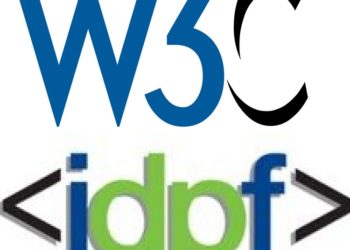
The basic paradigm scholarly publishers have been working in has shown signs of maturity for many years now. We can list these signs, or at least some of them — the flattening of library budgets, the growing involvement of regulatory agencies in the operations of publishers, the difficult challenge in introducing new content-based products — but perhaps the most telling sign of all is the tight feeling in one’s gut that every advance will require a great effort, that growth is something that must be forced. Yes, there are opportunities in developing economies, but they come at a cost, and in any event when they appear they bring margins lower than what the industry has been accustomed to. Yes, Gold open access (OA) has opened up a new revenue stream (the line item in grants for Article Processing Charges), but as has been rehearsed on the Kitchen many times, Gold OA is inherently limited, as not all fields have generous granting agencies behind them. And, yes, new digital tools provide ways to lower costs, but lowering costs is not the same thing as top-line growth and not nearly as desirable. Think of the number of people employed in scholarly publishing today, and then consider what that number will be five years from now: a smaller number, surely, and more distributed around the globe, with actual declines in the Anglophone developed world. The old gray mare ain’t what she used to be.
We should take a minute to define just what we mean by “the publishing business.” Publishing is about the investment in content that is largely text-based. That content is then refined and marketed. In other media fields (music, say, or movies) the principle is the same, but the content type is different. Publishing — the investment in content — is fundamentally different from publishing services, where the investment is in tools and platforms; and it is different from writing books and articles and different as well from curating publications as a librarian would. What is mature, then, is not the writing of articles (every new idea for an article is an entrepreneurial breakthrough) or, say, the operation of a content-management system on behalf of publishers; what is mature is the investment in content itself and the hoped-for gains to be made on that investment. This does not mean that publishing has come to an end; it means that it is not youthful and spry: its future is largely behind it.
Everyone must play the hand they are dealt, and this is no less true of publishers than anyone else. The management of publishing companies must decide how to play that mature hand. Will they fight against their situation and attempt to swim upstream? Will it be a brutal market share battle? Or perhaps it will be a shrinking of ambitions and running a company for cash? (We may see more people opt for that last choice in coming years, with companies being taken private through private equity investors.) There are also smart and creative publishers that decide — are deciding now — to move beyond publishing into related areas. Publishing services is high on this list; think of how the largest publishers are hoovering up one society journal after another through licensing arrangements. Those with the greatest vision are beginning on a post-publishing future of data science, where emergent properties of huge aggregations of published content are teased out computationally. The aerie of data science effectively sits atop the fortress of content.
A publisher may publish an article on, say, surgical techniques for knees battered by a lifetime of running on hard pavement. A data company, on the other hand, gathers up every bit of information about knees and surgical techniques and many other things besides. For Big Data to be useful, it must be BIG. We are just beginning to learn what can be made of that data. At the most primitive level, the information is used to reveal something about users in order to attract advertisers to a target audience. More interesting (at least to me) is the information that serves as a feedback loop to shape services–surely part of the reason Elsevier bought Mendeley. But data scientists are already pushing beyond that into predictive analytics. I doubt I am the only reader of this blog who was astounded to read John Markoff’s piece in the Times on how Microsoft has learned to identify people with pancreatic cancer from their seemingly neutral search queries.
A publisher that moves beyond the investment in and sale of content is not making the publishing business any younger, but it is opening up new growth prospects for the publishing company itself. We will have to find a new name for these entities: “publisher” doesn’t say enough; “data company” ignores the underlying publishing assets; “information company” doesn’t capture the synthetic nature of much published content. Whatever we come to call entities of this sort, what is clear is that they are swimming with the current, as economic value migrates away from content to the information that surrounds it. Today we mostly give away our metadata; at some future point we may give away the content to reap the benefits of the control of metadata that is more broadly conceived. Here is a parlor game for publishers — or more likely a drinking game in the bar at one of the industry’s numberless conferences: Come up with a strategy to profit from Sci-Hub by extracting the metadata surrounding it, effectively turning Alexandra Elbakyan into your company’s Goon-in-Chief.
Data is not an equal opportunity business, however; scale is everything. This means that once again the biggest companies are in a better position to take advantage of data science, which will likely lead to even more acquisitions and consolidation in the industry. The larger companies have already begun to move in this direction, stepping up the recruitment of professional societies to their roster to provide more bulk and more data. As my colleague Michael Clarke points out, when a society makes a deal with a large publisher, the society is compensated for the sale of its content, but the large publisher alone gets the benefit of the surrounding data, which is not shared with the professional society. In effect, the society sells eggs, but the large publisher quietly purchases eggs and cheese. This is yet another instance of the structural asymmetry of business arrangements between the big and the small.
This is why some publishing companies–some–are not mature even if the underlying publishing business is. The marker for growth is not editorial excellence or brand and not even size and reach; the real determinant of value is management and its ability to enter what appears to be a cul-de-sac and discover a dozen doorways. (Napoleon: “To be in god’s place? I would not want it; that would be a cul-de-sac!”)
In terms of adding value to the enterprise, the strategic vision of management is the real determinant. Businesses are not mature, but managements often are.
Discussion
9 Thoughts on "The Publishing Industry is Mature, but Publishing Companies are Not"
Given that all data is specialized I see no reason why “narrow” scholarly societies cannot move into big data, if and when it proves valuable, which it has yet to do. However, content aggregation and big data analysis are two different things, hence two different businesses. Analysis requires special skills, not to mention special computers and software.
As for gold OA, I would not dismiss it as a major growth area for all sizes of publisher, at least in STM, which is a major industry segment. For all we know the money available for APCs is far greater than that available for subscriptions. Gold OA is a different economic system, with different customers and a different equilibrium.
This post seems to presume that there is an imperative of growth, return on investment, etc. that applies to all publishers, but if there is such an imperative for university presses, it is manifested in different ways than it applies to commercial publishers. University presses are not compelled to increase market share to survive, they are generally not subject to merger, they do not have to be at the cutting edge of innovation, etc. Talking about publishing in broad strokes covers up differences among subsectors that are important. Heck, there are even music publishers (sheet music), which probably operate in significantly different ways from text-oriented publishers.
I imagine some, perhaps many, societies and journals also do not feel compelled to try endlessly to grow. They are doing the job they want to do. Joe is not addressing such.
While mission is paramount to most university presses and societies (over profits), I have yet to meet one that would not prefer to reach a wider audience or achieve a higher level of financial sustainability. While it may not be a top priority, a press ignores such matters at its own peril.
The two goals you mention specifically are often in conflict. E.g., achieving greater dissemination by issuing more paperbacks, and sooner rather than later, is not always the best way to achieve greater revenue.
Sandy I am not so sure your altruistic view of university presses is so. As the presses become part of the library and the library receives its budget from the university and the university is a business, well at some point some accountant is going to say why are we supporting a press that publishes books that no one wants to read? The press can say well what we do is part of the university mission and the accountant will say our budgets are tight and our mission is to educate students, lets let someone else publish that which no one wants to read.
University and college sports teams that make money get money from the university and those that don’t are dropped. There are lists of them on the web. Why won’t the same apply to the press?
First, Harvey, don’t be quick to assume that when a press joins a library, the budgets of the two get merged. That did not happen at Penn State; our finances remained independent of the library’s. Second, Harvey, very, very few universities have athletic departments that earn enough money to cover all of their expenses–just about two dozen in all do. Presses have usually not been located in parts of the university that act as businesses; they usually report to provosts or other academic deans and hence are not expected to be bottom-line oriented. Very, very few university presses have been closed down, and not usually just for budgetary reasons. The savings for closing the SMU Press was just 400,000 a year, less than the salary of an assistant football coach.



